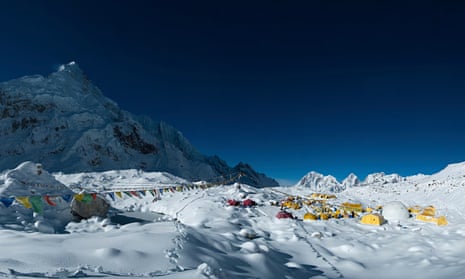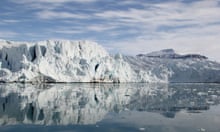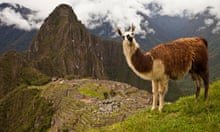It was the 11th day. We sat on large stone slabs, watching as the helicopter pitched away from the Khumbu Icefall and began its approach. Dawa poured tea into paper cups, soon forgotten at our feet. The third Sherpa came into view, twirling slowly beneath the helicopter, affixed by cable. Within minutes he passed overhead, his feet twisted inwards, his ragged frame motionless. Sixteen Sherpas had died in an avalanche, marking this day (18 April 2014) as the deadliest in Everest’s history.
The Himalayas have long bridged the extremes of outstanding natural beauty and formidable risk. Home to all 14 of the world’s 8,000m-plus peaks and an impressive array of wildlife, including the moon bear, red panda and snow leopard (and for fans of lore, the fabled yeti), its sheer cliffs and lush valleys are a draw for athletes, nature-lovers, artists and scientists.
And so it was for us, having departed from the bright Nepalese village of Lukla, (2,860m) 11 days earlier and heading for Everest base camp (5,364m). I was joined by Martin and Jaynika, a young English couple; we were led by Damber Rai, a charismatic and seemingly ageless guide, and Dawa Tenjing Sherpa, his shy, sweet-toothed assistant.
The first days traced the glittering Dudh Kosi river, up towards the cobbled Namche Bazaar (3,445m). At these lower altitudes we passed farms of coriander, strawberry, pak choi and tomato, while the pines were spotted with wild cherry blossoms and occasional magnolia. Kerosene, red brick and timber were hauled along by dzopko, cow-yak crossbreeds with gentle faces, who ambled past us on the dusty slopes, a jangling chorus of cowbells and drover yelps.
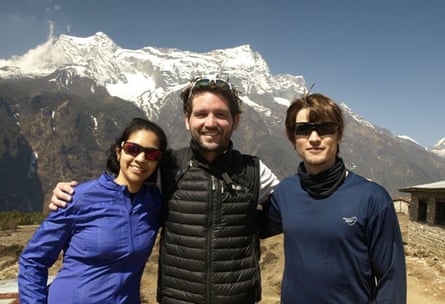
Damber often teasingly referred to the path ahead as “Nepali flat”, translating as “many ups and downs”, but some of the climbs were longer: two or three hours, and Damber would grin mischievously at us, chanting “bistarai, bistarai!” (slowly, slowly!) before leading the way. Pausing for water and air, we sat and watched tortoiseshell butterflies flit among juniper shrubs. Twice we surprised rare, brightly plumed Impeyan pheasants, who would spring from hiding and take to chubby flight along the warm valley breeze.
By mid-afternoon each day we would retire to one of the Everest Summit Lodges that lined most of the route, finding their elegant rooms and excellent dining prospects to be a welcome reward for our day’s labours. In one such lodge, over a zesty thali, Damber gestured to the sepia photographs lining the walls: they depicted legendary Sherpas who had found fame on Everest, such as Babu Chiri Sherpa, who spent 21 hours at the summit without bottled oxygen, and Pasang Lama Sherpa, the first Nepalese woman to summit Everest.
I ventured the question, had Damber ever challenged Everest? He swept his finger back across several of the photographs: “Died, died, died. Very easy to die on Everest.” He shook his head. “I wanted to climb, when I was younger. But my wife said to me: you must choose. Mountain or family.”
He smiled brightly at us, with no trace of regret.
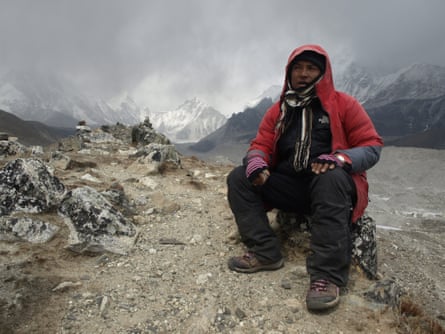
We followed the trail up past Namche, climbing through lichen-fuzzed birches to an ancient Buddhist monastery, where we found a lama patiently washing small goblets, incense burning nearby. I asked what advice he might offer us. He smiled serenely, suggesting a philosophy of “respect yourself before you respect others; love yourself before you love others,” and humbly thanked me for allowing him to share.
Further still, the path rose by the day, soaring through striking mountain ravines towards Tashinga (3,450m), Dingboche (4,530m) and eventually the modest hamlet of Gorakshep (5,164m), where wild-looking men sauntered about on horseback. The temperatures dropped sharply; we donned windbreakers and then down jackets with gloves, for comfort.
Our breaths turned to mist. Passing quaint stone-wall villages, we found wisps of snow crunching beneath our feet, and with the cold, new beasts: mountain goats, jabbering snow cocks, and immense woolly yaks with slow, pensive gazes.
Beneath the watchful eye of a vulture, we reached Ama Dablam base camp, which we found deserted. We took shelter from the wind behind boulders, ate cheese and apple sandwiches, and napped peacefully in the wintry sun.
The day after we reached Everest base camp, a challenging three-hour climb led to our highest point: the peak of Kala Patthar (5,545m), a black stone ridge offering jaw-dropping 360-degree views of the peaks of Everest, Changtse and Nuptse Nup II.
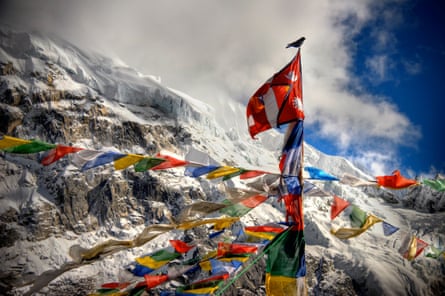
Damber and Dawa jovially shook our hands in celebration, and I stood very still in the thin air, awed by the myriad white peaks and the blue-bowelled canyons. If our own challenge to nature was relatively benign, this haunting spectacle was anything but.
The descent back to Lukla was rapid, and we were soon returned to the heat of Kathmandu, basking in the five-star glory of Dwarika’s, an enchanting heritage palace and spa resort in Dhulikhe, in the foothills of the city. In its leafy pool-side courtyard, our tired bodies were rejuvenated.
But first, we paid a social call to Damber’s family store, a cheerful grocery outlet in Kathmandu’s shaded suburbs.
Damber served us chilled drinks while his wife offered a plate of chocolate. Their beautiful teenage daughter stopped by – she shares Damber’s mischievous grin. Damber explained the family’s hopes for her: “A master’s degree in science, or business, maybe,” he said, frowning in thought.
He grinned suddenly, eyes sparkling: “Because I always say to my children, to see the world, you must climb the mountain.”
